Biotelemetric fish tag integrates location, heartbeat, tail beat and temperature of the surrounding environment into one device
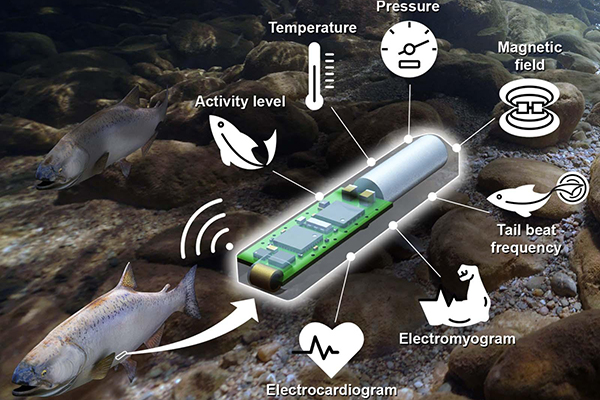
The Pacific Northwest National Laboratory (PNNL) has invented a miniature, implantable fitness tracker that’s revealing new information about fish health and behavior. Like a “Fitbit for fish,” the Lab-on-a-Fish device uses multiple sensors to wirelessly track what a fish experiences in real-time.
It’s the world’s first biotelemetric tag that combines edge computing with wireless sensing of in vivo physiology (electrocardiogram, electromyogram), behavior (activity level, tail beat frequency), and ambient environment (temperature, pressure, and magnetic field).
“The Lab-on-a-Fish offers something needed in conservation and aquaculture – a cost-effective way to monitor fish health and behavior,” said Daniel Deng, a Lab Fellow and mechanical engineer at PNNL whose sensor development team collaborated with the battery team led by Jie Xiao, a Laboratory fellow and chemist.
With Lab-on-a-Fish, the biosensor is surgically inserted under the skin near a fish’s rear dorsal fins. As the fish swims, a wireless receiver picks up the sensor’s telltale beeps. Once inserted, the device can simultaneously collect data about a fish, including its location, heartbeat, tail movement, and burned calories, as well as the temperature, pressure, and magnetic field of its surrounding environment.
This information can help scientists and managers understand the impact of climate change and infrastructure development on ecosystem health, and in turn, inform future management and conservation strategies.
Initially, Deng and other scientists at PNNL developed the Lab-on-a-Fish to help tackle a common challenge for hydropower projects: fish passage. By law, some hydropower facilities must assure that migratory fish species, such as salmon, can bypass dams and swim upstream to the rivers where they reproduce. Lab-on-a-Fish not only allows scientists to monitor fish passage success but also to identify whether the fish have encountered any physical stressors at specific points along their journey.
“If we want to know what stresses a fish out, we need to use tracking data and link that with detailed environmental, health and behavior data,” said Deng. “This is the first time this information can be integrated in this way.”
Once scientists retrieve the data from a wireless receiver or the device itself, a series of machine learning algorithms can help them tease out patterns among all the measurements.
“It’s not just about getting data,” said Deng. “Lab-on-a-Fish also has a built-in algorithm that helps make that data meaningful.”
The team designed the device to assist environmental managers and others in evaluating the environmental performance and safety of hydropower technology and mitigating impacts on wildlife. To date, the device has been successfully tested in the lab on three fish species, including rainbow trout (Oncorhynchus mykiss), white sturgeon (Acipenser transmontanus) and walleye (Sander vitreus), but its commercial applications extend to other economically important species.
Historically, fish tags have been limited by the number of sensors that can be put into one device without negatively affecting fish behavior or device longevity. In contrast, Lab-on-a-Fish weighs 2.4 grams, is about the size of a pen cap and can collect data for up to eight months – meaning scientists can study smaller species for a longer time than possible before.
The team currently working on the “next generation” of Lab-on-a-Fish, which tailors the device to specific user needs related to hydropower, conservation and aquaculture. In the future, Deng said this technology could help monitor a range of aquatic and terrestrial species, expanding its use and utility.
Read the full-text article about Lab-on-a-Fish.
Follow the Advocate on Twitter @GSA_Advocate
Now that you've reached the end of the article ...
… please consider supporting GSA’s mission to advance responsible seafood practices through education, advocacy and third-party assurances. The Advocate aims to document the evolution of responsible seafood practices and share the expansive knowledge of our vast network of contributors.
By becoming a Global Seafood Alliance member, you’re ensuring that all of the pre-competitive work we do through member benefits, resources and events can continue. Individual membership costs just $50 a year.
Not a GSA member? Join us.
Author
-
Responsible Seafood Advocate
[103,114,111,46,100,111,111,102,97,101,115,108,97,98,111,108,103,64,114,111,116,105,100,101]
Tagged With
Related Posts
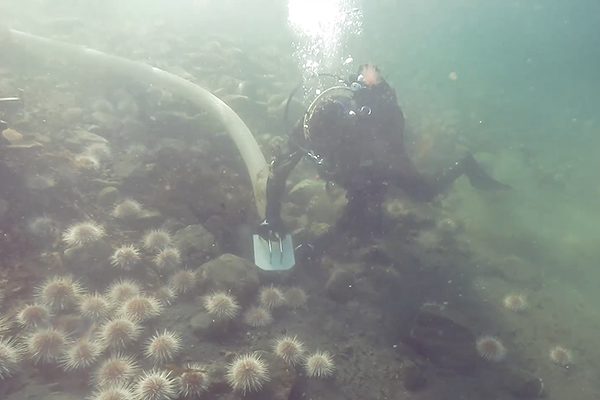
Intelligence
The seafood technology we didn’t know we needed: a sea urchin vacuum
An Indigenous business operating in Atlantic Canada is testing a sea urchin vacuum developed by C Robotics to improve harvesting efficiency.
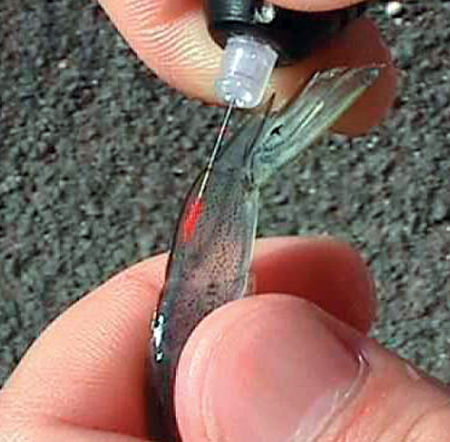
Health & Welfare
Tagging technology helps monitor shrimp performance in research, genetic improvement
A variety of external and internal tags have been developed over the past several decades to enable researchers to monitor aquatic animals.
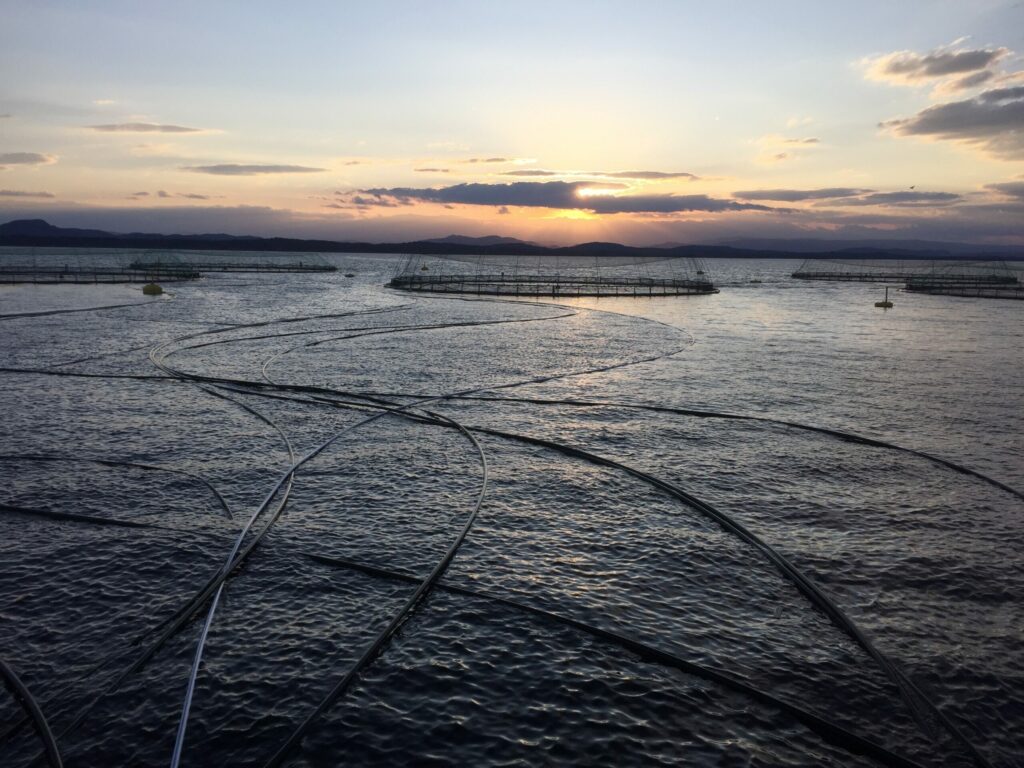
Intelligence
New tool enables continuous monitoring of fish farming operations
Manolin has added real-time systems integrations onto its platform, enabling continuous monitoring of fish farming operations.
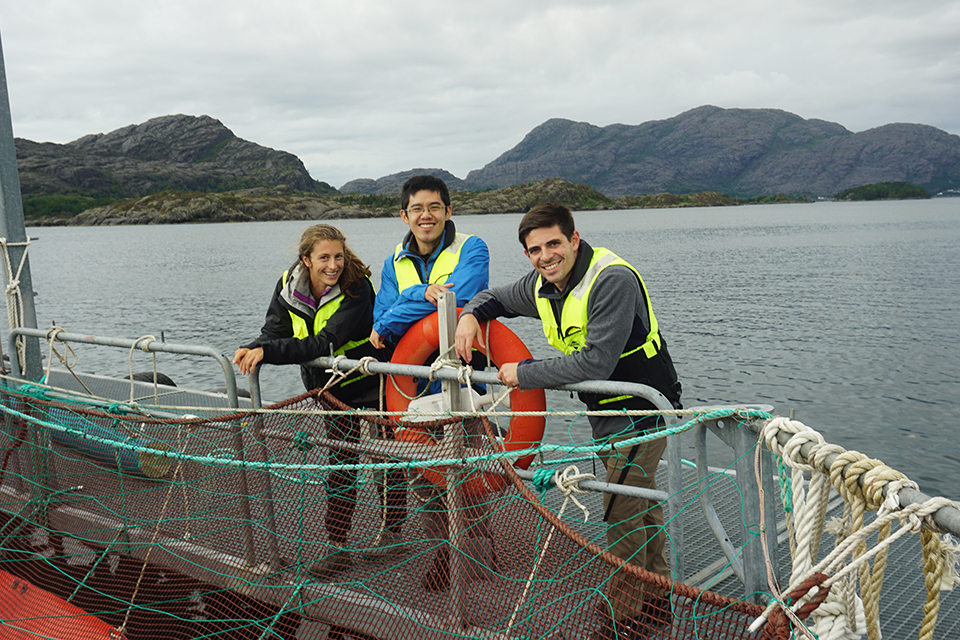
Innovation & Investment
Manolin begins automated disease alert system for salmon farmers
Norway-based software and data analytics firm Manolin launched a service to automatically alert farmers about nearby non-notifiable diseases.



